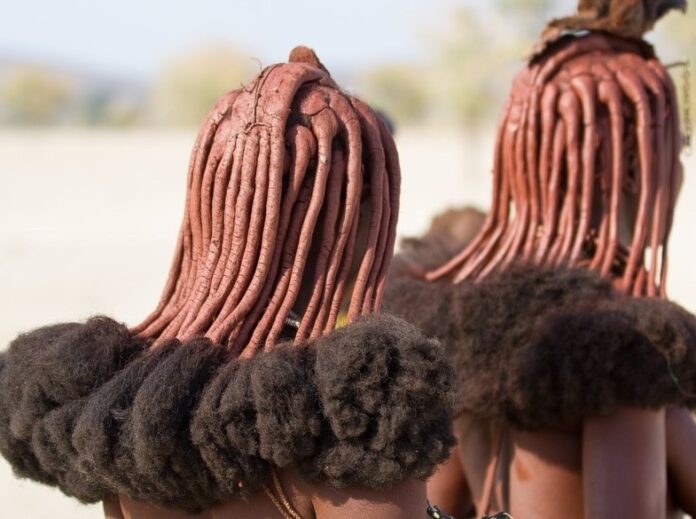The Himba people of Namibia are one of Africa’s most iconic and culturally rich communities. Known for their distinctive appearance, traditional lifestyle, and deep connection to their ancestral heritage, the Himba have captivated the world’s attention.
Among their many cultural practices, the wearing of dreadlocks stands out as a powerful symbol of identity, spirituality, and social status. For the Himba, dreadlocks are far more than a hairstyle—they are a profound expression of their way of life.
A Cultural Identity Rooted in Tradition
The Himba are a semi-nomadic pastoralist community living in the arid Kunene region of northern Namibia. Their society is deeply rooted in tradition, with customs and practices passed down through generations.
Dreadlocks, known as ondatu in the Himba language, are an integral part of their cultural identity. Both men and women wear dreadlocks, but the styles and meanings differ based on age, gender, and social status.
For Himba women, dreadlocks are often coated with a mixture of red ochre, butterfat, and aromatic herbs, giving them a distinctive reddish hue. This mixture, called otjize, serves both practical and symbolic purposes.
It protects their hair and skin from the harsh desert climate while also symbolizing the earth’s rich, red tones, which are sacred to the Himba. The intricate braiding and styling of their dreadlocks often indicate their age, marital status, and role within the community.
Spiritual and Ancestral Connections
Dreadlocks hold deep spiritual significance for the Himba. They believe that hair is a conduit for spiritual energy and a connection to their ancestors. By wearing dreadlocks, the Himba maintain a physical and spiritual link to their forebears, who are revered and consulted in daily life. The process of creating and maintaining dreadlocks is often accompanied by rituals and prayers, reinforcing their sacred nature.
For Himba men, dreadlocks are sometimes styled into a single plait or left to hang freely, symbolizing their strength and connection to the spiritual world. Young boys typically have their heads shaved, and dreadlocks are only grown as they transition into adulthood, marking their readiness to take on responsibilities within the community.
Social Status and Rites of Passage
Dreadlocks also play a crucial role in marking social status and life stages among the Himba. For women, the style and adornment of their dreadlocks can indicate whether they are unmarried, married, or have children.
Unmarried women, for example, often wear two long dreadlocks styled forward over their faces, while married women may have more elaborate styles adorned with shells, beads, or other ornaments.
The process of growing and styling dreadlocks is often tied to important rites of passage, such as puberty or marriage. These transitions are celebrated within the community, and the changing of hairstyles signifies a person’s evolving role and responsibilities.
A Symbol of Resilience and Pride
In a rapidly modernizing world, the Himba’s commitment to their traditional practices, including the wearing of dreadlocks, is a testament to their resilience and pride. Their dreadlocks are not just a hairstyle but a declaration of their cultural heritage and a refusal to let go of their ancestral ways. For the Himba, dreadlocks are a living symbol of their identity, spirituality, and connection to the land and their ancestors.

